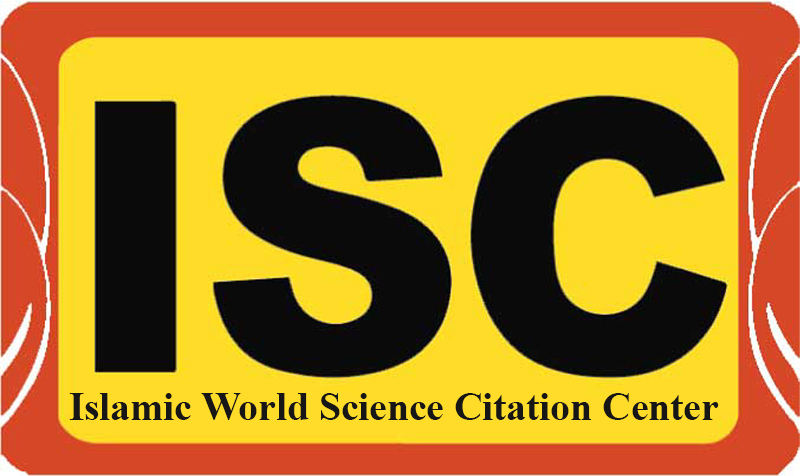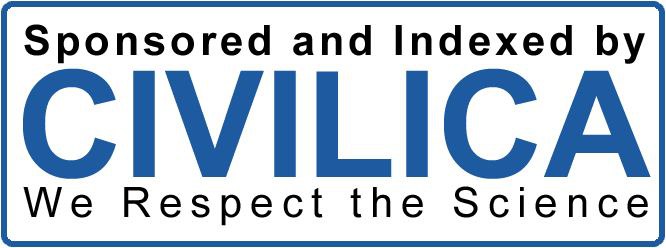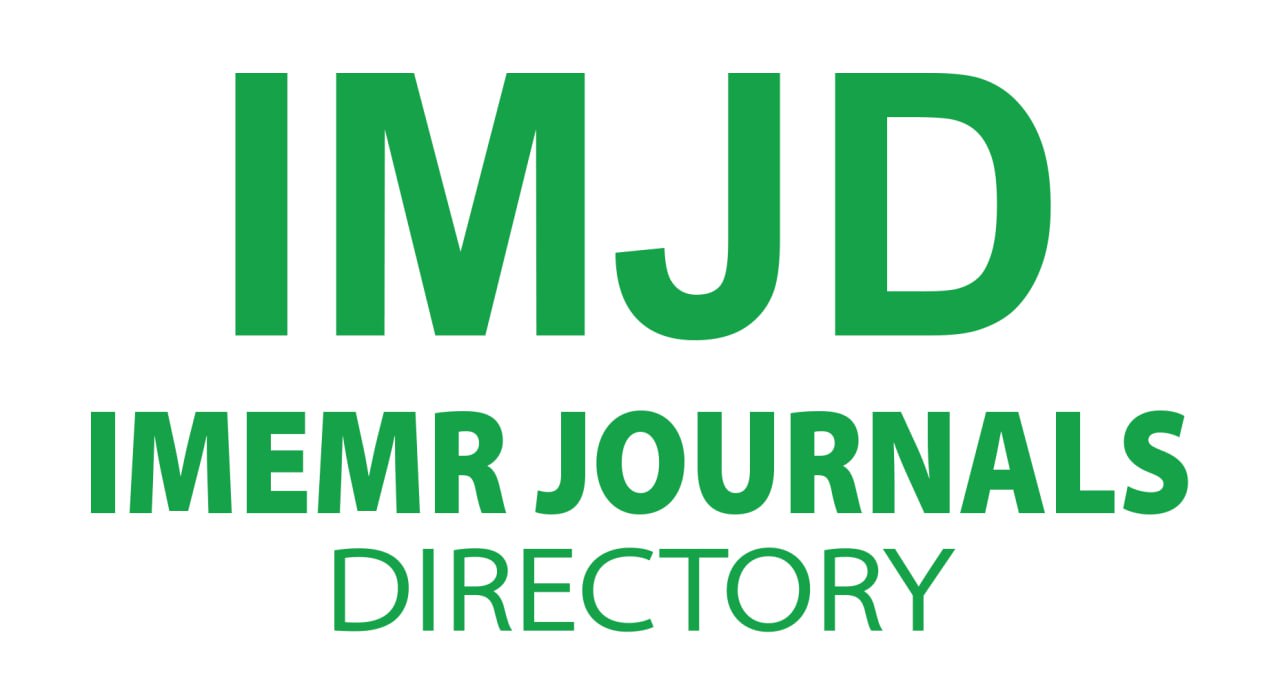| Publication Information |
|---|
| Editor-in-Chief: |
| Dr. Sayed Hussain Mosawi (Ph.D) |
| Editor Managing: |
| Mr. Murtaza Haidary (MSc) |
| Publication Period: |
| Twice a Year |
| Publication Language: |
| English |
| Online ISSN: |
| 3005-6632 |
| Print ISSN: |
| 3105-0778 |
Author Guidelines
INSTRUCTIONS TO AUTHORS
Afghanistan Journal of Basic Medical Sciences (AJBMS) is a scientific publication of Khatam Al-Nabieen University Press. Please entirely read the instructions discussed below before submitting your manuscript to the journal. Afghanistan Journal of Basic Medical Sciences publishes original articles on clinical or experimental work, case histories reporting unusual syndromes or diseases, brief reports, technical and educative reviews, recent advancement of knowledge of the medical sciences with original images, questionnaires of defining disease, and letters to the editor. Final recommendation for publication is made by the editorial board and at least two independent reviewers. The copyrights of articles accepted for publication belong to the journal. This is determined by the assignment of copyright statement, signed by all authors. The journal is published two times in a year. The language of the journal is English. Manuscripts submitted to the journal should not be published before or not under consideration elsewhere (in the case of previous oral or poster presentation of the paper at scientific meetings author should inform the journal). The full responsibility of the articles (ethic, scientific, legal, etc.) published in the journal belong to the authors. If the paper is not prepared in conformity with the writing instructions, decision for its evaluation will be made by the members of the editorial board.
All correspondences (manuscript submission, follow up, reviewer reports, revision files, acceptance form and other forms about publication) about Afghanistan Journal of Basic Medical Sciences (AJBMS) should be made online at https://www.ajbms.knu.edu.af/athurs. The rules about the manuscripts that would be submitted are given below.
Submitted manuscripts should be prepared using Microsoft Word program. All manuscripts, figures and pictures must be submitted electronically as Word and PDF format on https://www.ajbms.knu.edu.af/athurs. Authors should ensure that (apart from the title page) the manuscript should contain no clues about the identity of authors and institution where the study was performed.
All papers should be arranged on the basis of following sequence: 1. Title page, 2. English abstract, 3. Text of the article, 4. References, 5. Table(s), 6. Figure(s) and illustration(s), 7. Figure legend(s).
In the original articles number of words should not exceed 4000 (except abstract, references, tables, figures and legeds) for the text of article and 300 for the abstract. Upper limit for reference number is 40, and this limit is 10 for tables and figures. Abstracts should be written as a paragraph.
Case reports should be composed of English title, English abstract, introduction, case report, discussion and references. The number of typewritten pages should not exceed 8 pages and 3 picture in case reports. In abstract, numbers of words should not exceed 150 and should be written as a paragraph.
Reviews should be composed of English title. In abstract, numbers of words should not exceed 300. In reviews number of tables and figures (or pictures) should not exceed 6. Abstracts should be written as a paragraph.
Letter to editor, brief report, image report, advancements in technical and medical topics and questionnaires of original issues should not exceed 2 typewritten pages. It should be composed of English abstracts (50 words).
PREPARATION OF MANUSCRIPT
TITLE PAGE
Title of the article should not exceed 100 characters in original articles and 80 characters in case reports. Title should be written in English. The first and last names for all contributors designated as author should be written clearly. Subsequently, address of the institution where the study was performed should be written clearly. If the study was previously presented in any scientific meeting, name and date (as day-month-year) of the organization should be written. The name and mailing address of the corresponding author, accompanied by telephone and fax numbers, and e-mail should be written at the bottom of title page.
ABSTRACTS
Authors must prepare a structured abstract of approximately 250 words that is organized into the following clearly labeled sections: Background, Materials and Methods, Results, and Conclusion. The Background section should briefly introduce the broader scientific context, identify the problem being addressed, and state the primary objective of the study. The Materials and Methods section must succinctly describe the study design, including the selection and characteristics of study subjects or laboratory animals, as well as the key observational, experimental, and analytical procedures. The Results section should summarize the major findings, providing specific data and statistical significance where applicable, ensuring that all results reported correspond to those presented in the main manuscript. The Conclusion section should present the principal interpretations derived from the findings, emphasizing the novel and important aspects of the work and its scientific or practical implications. The structured abstract must accurately and objectively represent the content of the article and should not include data or claims that are not supported by the main text.
TEXT
Text is composed of Introduction, Materials and Methods, Results and Discussion.
INTRODUCTION
The introduction should briefly place the study in a broad context and highlight why it is important. It should define the purpose of the work and its significance. The current state of the research field should be reviewed carefully and key publications cited. Please highlight controversial and diverging hypotheses when necessary. Finally, briefly mention the main aim of the work and preferably highlight the principal conclusions. As far as possible, please keep the introduction comprehensible to scientists outside your particular field of research.
MATERIALS AND METHODS
Materials and Methods should be described with sufficient details to allow others to replicate and build on published results. Please note that publication of your manuscript implicates that you must make all materials, data, and protocols associated with the publication available to readers. Please disclose at the submission stage any restrictions on the availability of materials or information. New methods and protocols should be described in detail while well-established methods can be briefly described and appropriately cited.
Research manuscripts reporting large datasets that are deposited in a publicly available database should specify where the data have been deposited and provide the relevant accession numbers. If the accession numbers have not yet been obtained at the time of submission, please state that they will be provided during review. They must be provided prior to publication.
Interventional studies involving animals or humans, and other studies require ethical approval must list the authority that provided approval and the corresponding ethical approval code.
If applicable, separate subsections describing patients, ethical statement, experimental procedures, statistical analysis, etc. using appropriate subheadings, as illustrated below:
Ethical statement
For all manuscripts reporting data from studies involving human participants or animals, formal review and approval, or formal review and waiver, by an appropriate institutional review board or ethics committee is required and should be described in this subsection. For those investigators who do not have formal ethics review committees, the principles outlined in the Declaration of Helsinki should be followed.
Statistical analysis
Clearly define the sofwares and the analysis that performed.
Data availability
Please provide a Data Availability statement under this subsection. Certain data types must be deposited in an appropriate public structured data, and the accession number(s) provided in the manuscript. At publication, full access is required. If full data access is required for peer review, authors must make it available
RESULTS
Collected data and results of statistical analysis should be outlined in this section. This section should provide a concise and precise description of the experimental results
DISCUSSION
The discussion section should include interpretation of study findings and results should be considered in the context of results in other trials reported in the literature. All written content should be prepared in conformity with grammar and punctuation rules. Avoid abbreviations whenever possible; in case of necessary, it should be given in parentheses when they are first used. References, figures, tables and illustrations should be consecutively numbered in the order in which they have been cited in the text. All measurement units in the text should be used in accordance with international standards for units of measurement.
CONCLUSION
This section is optional, with one or two paragraphs. Alternatively, one or several concluding sentences can be stated in the Discussion.
ACKNOWLEDGMENTS
In this section you can acknowledge any support given, including funding. This section may also include administrative and technical support, or donations (e.g., materials used for experiments).
REFERENCES
References must be numbered consecutively in the order in which they first appear in the text (including citations in tables and legends) and listed individually at the end of the manuscript. We recommend preparing the references with a bibliography software package, such as EndNote, ReferenceManager or Zotero to avoid typing mistakes and duplicated references.
Citations and References in Supplemental data are permitted provided that they also appear in the reference list here.
In the text, reference numbers should be placed in parentheses (), and placed before the punctuation; for example (1), (1-3) or (1,3).
In the text, reference numbers should be placed in parentheses like ().
In the reference list, references should include the names of all authors when six or fewer; when seven or more, list only the first six names and add et al. References should also include full title and source information (Vancouver style). Journal names should be abbreviated as in MEDLINE. For detailed information about how to cite different sources see: CITING MEDICINE, 2nd edition: The NLM Style Guide for Authors, Editors, and Publishers
Standard journal article
Tashiro H, Shimokawa H, Sadamatu K, Yamamoto K. Prognostic significance of plasma concentrations of transforming growth factor-beta in patients with coronary artery disease. Coron Artery Dis. 2002;13(3):139-43.
More than six authors
Yetkin E, Senen K, Ileri M, Atak R, Tandogan I, Yetkin Ö, et al. Comparison of low-dose dobutamine stress echocardiography and echocardiography during glucose-insulin-potassium infusion for detection of myocardial viability after anterior myocardial infarction. Coron Artery Dis. 2002; 13(3):145-9.
Books
Heger JW, Niemann JT, Criley JM. Cardiology, 5th ed. Philadelphia: Lippincott, Williams & Wilkins; 2003.
Chapter in a book
Braunwald E, Perloff JK. Physical examination of the heart and circulation. In: Braunwald E, Zipes DP, Libby P (eds). Heart disease; a textbook of cardiovascular medicine, 6th ed. Philadelphia: WB Saunders; 2001, pp. 45-81.
Personal communications and unpublished work should not feature in the reference list but should appear in parentheses in the text. Unpublished work accepted for publication but not yet released should be included in the reference list with the words 'in press' in parentheses beside the name of the journal concerned. References must be verified by the author(s) against the original documents.
TABLES AND FIGURES WITH LEGENDS
All tables and figures should be cited in the main text as Table 1, Figure 1, etc.
Provide the tables and figures at the end of the manuscript, below the title TABLES AND FIGURES WITH LEGENDS. Number the tables and figures according to their sequence in the text. The text should include references to all the tables and figures, including supplemental tables and figures. Each table and figure should be assigned an Arabic numeral and if needed placed in round brackets, e.g., (Table 1) or (Figure 1). The supplemental tables and figures are referred to in the text as Table S1, Figure S1, etc.
Tables must be editable cell-based in Microsoft Word or embedded with Microsoft Excel. Do not use empty rows to create spacing. Do not use spaces to create a new line, indent, or justify content. Do not include graphic objects, images, or colored text. Text justification in tables should be left when applicable. Use Times New Roman, font size 11.
Include a brief and self-explanatory title at the top of the table. Provide other explanations essential to the understanding of the table at the bottom of the table. Identify statistical measures of variations, such as standard deviation and standard error of the mean or other where appropriate. Define all abbreviations and symbols at the bottom of the table.
TABLE 1. This is a table title

E 1: Entry 1; E 2: Entry 2
*Footnote 1; #Footnote 2
Initial submissions do not require high-resolution image files, but images must be of sufficient resolution for referees to properly evaluate the data. We prefer that the figures be incorporated with the manuscript text into a single Word document at initial submission, but separate image files may be supplied if necessary.
Should your manuscript be accepted, you will receive more extensive instructions for final submission of display items. However, some guidelines for the preparation of final figures are provided below if you wish to minimize subsequent revisions and potential delays.
Provide images in RGB color and at a resolution of 300 dpi or high. Use the same typeface (Arial or Helvetica) for all figures. Use symbol font for Greek letters. Use distinct colors with comparable visibility and avoid the use of red and green for contrast. Recoloring primary data, such as fluorescence images, to color-safe combinations such as green and magenta or other accessible color palettes is strongly encouraged. Use of the rainbow color scale should be avoided. Figures are best prepared at a width of 80 mm (single column) and 160 mm (double column) with a maximum height of 170 mm. At this size, the font size should be 5-7pt. A guide to preparing final figures is available here: Figure guidelines.
Blot and gel reporting requirements. The authors have to provide original, uncropped, unadjusted, or otherwise manipulated, images during the peer review process or before the manuscript acceptance. The authors will be contacted by the Editorial office to provide the images by email, or if the files are large, using an appropriate file transfer service.
For more details on the original blot and gel images and reporting the blot/gel results please consult the PLOS ONE Blot and Gel Reporting Requirements on which the Afghanistan Journal of Basic Medical Sciences policies were built.
Figure legend should include a short explanation of what is depicted in the figure (may be the same as in manuscript text). Legends should be detailed enough so that each figure and caption can, as far as possible, be understood in isolation from the main text

FIGURE 1. This is a figure title, Schemes follow the same formatting. If there are multiple panels, they should be listed as: (A) Description of what is contained in the first panel; (B) Description of what is contained in the second panel. ABR 1: Abbreviation; ABR 2: Abbreviation 2
SUPPLEMENTAL DATA
Provide any supplemental material (e.g., tables, figures, etc.) at the end of the manuscript, after the tables and figures and below the title SUPPLEMENTAL DATA. Each supplemental table and figure should be assigned an Arabic numeral and named as Table S1, Figure S1, etc.
The formatting requirements provided above for the main tables and figures apply to supplemental material.
REVISION AFTER REFEREE REPORT
Authors should point by point reply the items on which revision is demanded via referee report to the reserved box in the online system and as additional files should be uploaded on https://www.ajbms.knu.edu.af/athurs. Additionally they should do necessary changes in article and highlight them and submit online again.
FINAL CHECKING
- All pages have been numbered beginning form first page of the text.
- Assignment of copyright form has been properly filled and signed.
- The abstract should not exceed 300 words in original articles and 150 words in case reports.
- The title has been separately written in English.
- References is in conformity with the instructions.
- All abbreviations used in tables, figures and illustrations have been defined.








